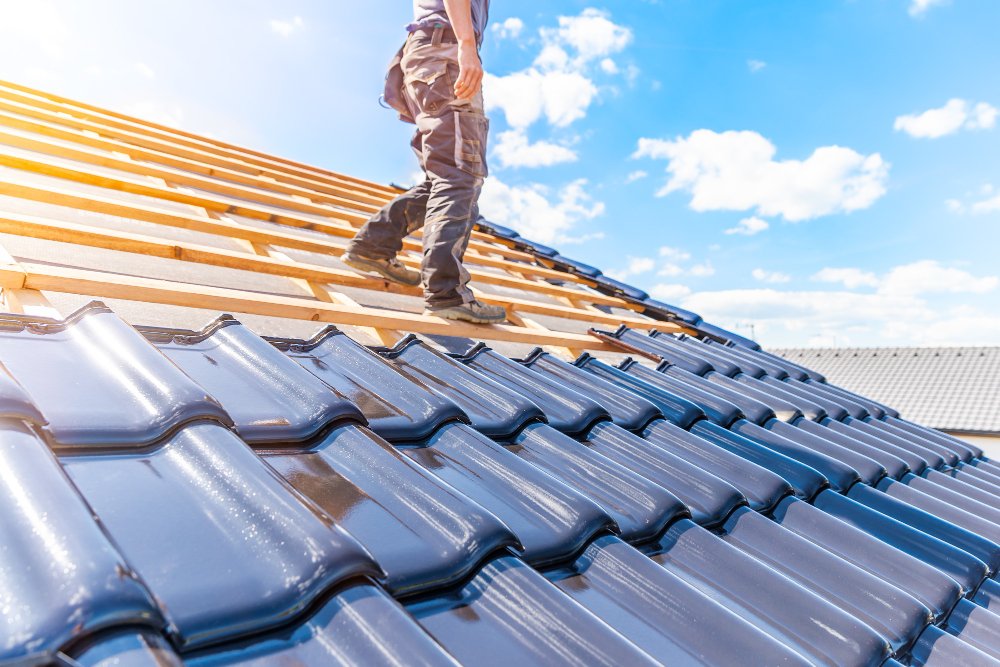How to Evaluate Different Roofing Alternatives for Your Structure Demands
Examining roof covering alternatives for your structure requires an extensive technique that considers different elements such as the planned use of the framework, neighborhood environment problems, and product attributes - Roofer. It is vital to weigh the benefits and downsides of different roofing types, from asphalt roof shingles to steel and clay floor tiles, while also factoring in initial prices and lasting maintenance.
Assessing Your Structure's Demands
To properly evaluate roof choices, begin by completely evaluating your building's needs. Beginning by thinking about the structure's meant use, as different frameworks may require differing roof specs. Property roofs typically prioritize looks and insulation, while commercial buildings may focus on sturdiness and load-bearing capacity.
Next, evaluate the local climate conditions that will impact roof performance. Factors such as temperature level changes, precipitation levels, and wind patterns can affect material selection and layout. A roof that masters a warm climate might not carry out as well in locations prone to hefty snowfall or severe warmth.
Additionally, examine the structural stability of your structure. Make certain that the existing framework can support the selected roof covering products, particularly if thinking about larger choices. It is additionally essential to evaluate any neighborhood building codes or policies that may dictate details requirements for roofing systems.

Comparing Roof Materials
As soon as a thorough evaluation of your building's demands has been completed, the next step involves comparing numerous roof covering materials. Each product supplies distinctive benefits and drawbacks, making it vital to align your choice with your certain needs and circumstances.
Asphalt roof shingles are extensively identified for their affordability and simplicity of installation, making them a prominent choice for domestic structures. On the various other hand, steel roof, known for its resilience and long life, can stand up to harsh climate conditions however may feature a greater first financial investment.
Clay and concrete tiles supply exceptional thermal insulation and visual appeal, particularly for Mediterranean-style style, yet they need a more robust structural assistance because of their weight. Timber shakes offer an all-natural appearance and excellent insulation buildings however may require much more maintenance and are at risk to fire risks.
Examining Expense and Budget
Evaluating your roof choices necessitates a cautious analysis of cost and spending plan considerations. The overall allocate a roof covering project comprises a number of elements, including material expenses, labor costs, maintenance, and prospective long-term savings. It is important to develop a clear budget before checking out details roof materials, as this will guide the decision-making process and assist you avoid overspending.
Begin by getting quotes from several contractors to recognize labor costs in your region. Make certain that these price quotes read this post here include all necessary services, such as elimination of the old roof, installment, and any kind of extra features, like insulation or ventilation improvements - Roofing Contractor. Next, analyze the price of different roofing materials, taking into account both initial installation expenses and expected life-span

Understanding Energy Efficiency
Energy performance plays a critical duty in the selection of roofing materials and systems, dramatically impacting both energy consumption and general comfort within a building. A well-chosen roofing can improve thermal performance, reducing the demand for heating and cooling down systems, which consequently reduces power bills and lessens ecological influence.
When assessing roof covering choices, take into consideration materials that mirror instead than absorb heat. In addition, correct insulation and air flow are crucial to optimize the power efficiency of the entire roof system.
One more important aspect is the roof covering system's durability and maintenance demands. Resilient materials that call for much less constant substitute add to long-lasting energy financial savings. The energy performance of a roof covering system can also be evaluated with its conformity with well established sustainability scores such as ENERGY STAR or LEED.
Taking Into Consideration Aesthetic Appeal
A roof covering's visual charm significantly affects the total look of a building, matching its building design and boosting visual appeal. Perrysburg Roofer. When examining roof alternatives, it is vital see this site to take into consideration just how the picked material, color, and design will harmonize with the existing framework and community. A well-designed roof covering can elevate even the easiest of structures, transforming them right into aesthetic prime focus
Different roofing products use different visual high qualities. For instance, traditional shingles might evoke a traditional beauty, while metal roofing can pass on a contemporary, sleek look. Furthermore, the color of the roof covering product plays a vital role; lighter tones can make a building show up more large, while darker tones may create a cozier ambiance.
In addition, architectural elements, such as dormers and eaves, can improve the roofing system's visual influence. It is a good idea to seek advice from professional developers or engineers to guarantee the chosen roofing alternative lines up with the overall layout intent. Eventually, a roofing system needs to not only offer practical benefits yet additionally add positively to the building's visual, mirroring the owner's preference and the personality of the surrounding setting.
Verdict
